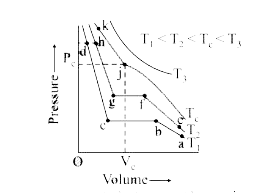From the following flowsheet for the extraction of pure metal, answer the given questions.

(v) Reduction of oxides to elements with carbon generally takes place at high temperature, hence Al is used in aluminothermite process. It is because :
Al is more electropositive than the other metals (to be formed by reduction).
Al has maximum affinity for oxygen.
Reduction is highly exothermic, and the heat liberated makes the process spontaneous.
Reduction is highly endothermic, and the heat absorbedmakes the process spontaneous.
The correct Answer is:A, C
Step by step video & image solution for From the following flowsheet for the extraction of pure metal, answer the given questions. (v) Reduction of oxides to elements with carbon generally takes place at high temperature, hence Al is used in aluminothermite process. It is because : by Chemistry experts to help you in doubts & scoring excellent marks in Class 12 exams.
Updated on:21/07/2023Topper's Solved these Questions
- GENERAL PRINCIPLES AND PROCESS OF ISOLATION OF ELEMENTSBOOK - CENGAGE CHEMISTRY ENGLISHCHAPTER - GENERAL PRINCIPLES AND PROCESS OF ISOLATION OF ELEMENTSEXERCISE - Exs 1.1 (Subjective)
25 Videos
- GENERAL PRINCIPLES AND PROCESS OF ISOLATION OF ELEMENTSBOOK - CENGAGE CHEMISTRY ENGLISHCHAPTER - GENERAL PRINCIPLES AND PROCESS OF ISOLATION OF ELEMENTSEXERCISE - Exs 1.1 (Objective)
14 Videos
- GENERAL PRINCIPLES AND PROCESS OF ISOLATION OF ELEMENTSBOOK - CENGAGE CHEMISTRY ENGLISHCHAPTER - GENERAL PRINCIPLES AND PROCESS OF ISOLATION OF ELEMENTSEXERCISE - Archives (Subjective)
14 Videos
- ELECTROCHEMISTRYBOOK - CENGAGE CHEMISTRY ENGLISHCHAPTER - ELECTROCHEMISTRYEXERCISE - Archieves Subjective
35 Videos
- GRIGNARD REAGENTS AND ORGANOMETALLIC REAGENTSBOOK - CENGAGE CHEMISTRY ENGLISHCHAPTER - GRIGNARD REAGENTS AND ORGANOMETALLIC REAGENTSEXERCISE - Exercises Archives (Linked Comprehension)
1 Video
Similar Questions
From the following flowsheet for the extraction of pure metal, answer the given questions.

(i) Step A is :
View SolutionFrom the following flowsheet for the extraction of pure metal, answer the given questions.

(ii) Step B (reduction) can be carried out ny using :
View SolutionFrom the following flowsheet for the extraction of pure metal, answer the given questions.

(iii) Impure Cu metal is also obtained :
View SolutionFrom the following flowsheet for the extraction of pure metal, answer the given questions.

(vi) following reaction is not involved in thermite process :
(a)3 Mn3O4+8Al→9Mn+4Al2O3
(b) Cr2O3+2Al→Al2O3+Cr
(c) 2Fe+Al2O3→2Al+Fe2O3
(d) B2O3+2Al→2B+Al2O3
View SolutionFrom the following flowsheet for the extraction of pure metal, answer the given questions.

(iv) Some of the following metals are obtained by electrolysis of their fused salts : Al,Na,Cu,Ag,Mg,Ca. These metals are :
View SolutionLook at the given figure and answer the following questions:

What change in temperature is seen when this change takes place?
View SolutionIn the stages involved in the extraction of metals in general - give reasons for following
Reduction of metallic oxides to metal in the extraction of metals from the ores - is based on the position of the metal in the activity series.
View SolutionIsotherms of carbon dioxide at various temperatures are represented in figure. Answer the following questions based on this figure.

Will condensation take place when the temperature is T3?
View SolutionHighly electropositive metal(s) can not be commercially extracted by carbon reduction process at high temperature because these :
View SolutionAccount for the following facts:
(a) The reduction of a metal oxide is easier if the metal formed is in the liquid state at the temperature of reduction.
(b) Limestone is used in the manufacture of pig iron from haematite.
(c) Pine oil is used in the froth flotation process used to concentrate sulphide ores.
View Solution